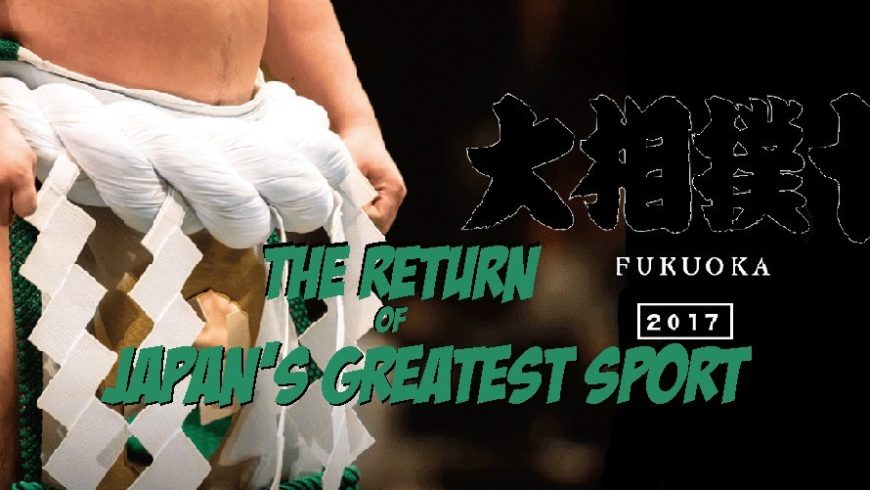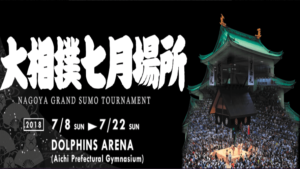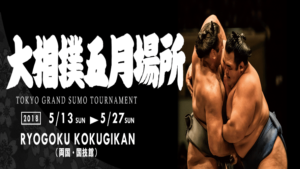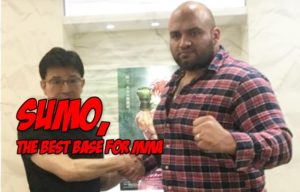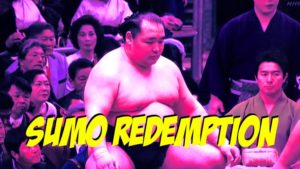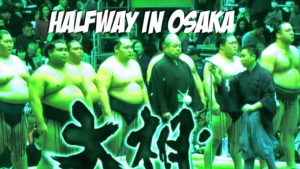I began reporting on Sumo wrestling for Middle Easy this at the beginning of the year when the first Japanese Yokozuna was promoted to the rank in nearly 20 years.
Kisenosato becoming Yokozuna was a massive moment for the sport. Mainstream Japanese support for Sumo surged with the crowning of a new Japanese Yokozuna. In the here today, gone tomorrow popular culture of Japan, Sumo had a chance of being back in. But for a sport so steeped in Japanese tradition (and Japan being so steeped in xenophobia), the years of foreign dominance had taken its toll.
For Sumo wrestling to thrive again it needed a Japanese champion at the top.
#Sumo Kisenosato ilusionado con el torneo de Fukuoka https://t.co/FXAebWLuL9 pic.twitter.com/k2bapzVQ9K
— Eduardo de Paz (@edupaz) October 3, 2017
But why is it so important to the sport’s popularity that a Japanese fighter hold the highest title in Sumo?
Of course, the long history of Sumo has numerous highs and lows in the sport’s popularity. Recently in 2012, the sport had reached its modern rock bottom. Applicants to become rikishi (Japanese term for a Sumo wrestler) were at a record low. Scandals surrounded the sport; the assumption that rikishi led exemplary lives became tarnished. Gambling scandals in 2010 had exposed the relationship between illegal gambling and Sumo. In 2010, an investigation revealed that Sumo matches were being thrown, and many wrestlers admitted to accepting brides to lose bouts. The sport was in shambles.
It was a sad low point for what had been a cornerstone of Japanese sporting culture.
In many ways, the lifestyle of a Sumo wrestler had been unchanged by time. For 300 years, Sumo wrestlers maintained the culture and traditions of Japan and authentically lived those values, or at least that was how it was marketed. The sport is as much ceremony and tradition as it is competition, so there is a bit of theatrics in everything that is done. And just like in theater, Sumo requires the audience to play along a little. This holding on to the past in the face of an increasingly modern world is part of the appeal of Sumo. Even if it isn’t that realistic.
Even though it is an old sport, Sumo has been a regular part of modern Japanese sports. Post-WWII Japan had three major televised sports: baseball, professional wrestling, and sumo. Sumo maintained its status as the premiere combat sport of Japan up into the 2000s. But since the 2003 retirement of Takanohana Kōji (whose rivalry with Sumo/MMA fighter Akebono set Sumo on fire in 90s), there hasn’t been a single Japanese Sumo even close to Yokozuna.
The rise and fall of Mongolian sensation Asashoryu began the downfall of Sumo’s popularity. Raising to prominence in 2002, after only fighting in the top division of Sumo for one year, Asashoryu took Sumo by storm. He’d win 18 of the 24 tournaments held between 2003 and 2006. The only stumbling block to his becoming a massive star was Asashoryu is not Japanese. Even worse to the Sumo Association and the culture at large, he clearly didn’t give a fuck about Sumo tradition. He got drunk, disrespected ceremony, and finally, assaulted a waiter at a restaurant. After the assault and multiple instances of misconduct, he was forced to retire from the sport in 2010. He could have been the greatest Sumo of all time, but left the disgraced and disrespected. This scandal, coupled with the growing connections to Yakuza and illegal gambling, soured the Japanese public on the sport.
式守伊之助のNHKプロフィッシナル見ています!大変さと、気持ちの中の戦い。良い番組だ!これから頑張って、馬鹿酒出来るだけおさいで下さいね。☺️ pic.twitter.com/2KdmtijSau
— Asashoryu第68代横綱朝青龍🇯🇵🇲🇳 (@Asashoryu) November 6, 2017
The power void left by Asashoryu was quickly filled by a fellow Mongolian, the legendary Hakuho. The kikishi that would eventually become the winning-est Sumo of all time initially seemed to embody everything that Asashoryu didn’t. He was respectful, sober, and while he was Mongolian, the public thought he exemplified “yamato damashi”, the samurai soul. There was hope with his dominance excitement would return to the sport, despite there being no Japanese fighter at the highest rank. Without a major rival, Hakuho began years of dominance that could have healed Sumo’s recent troubles.
But that all started to change in 2015, when after capturing the record for most Basho tournaments won, Hakuho showed up to the press conference the next day an hour late, and drunk as hell. The Japanese public was aghast. The goodwill being built was suddenly gone. Hakuho’s subsequent issues with giving opponents an extra push after victory cemented him as a foreign villain to mainstream Japan. His dominance only embittered the public more to the sport.
So, a Japanese Yokozuna returning to Sumo to early this year means quite a lot. It opens the door to regain the level of popularity the sport had once enjoyed. But Kisenosato’s rise to Sumo’s highest rank seems cursed. After winning the first Basho of the year in January, he was elevated to highest rank of Sumo and mainstream interest rallied around him. The next tournament, Osaka Basho in March sold out remarkably quickly, and fans were treated to a dramatic playoff victory for the Emperor’s Cup won by the newly elevated Yokozuna. But since then his reign has been mired in bad luck. An arm injury sustain in that March victory never fully healed, and he was forced to pull out of the May tournament on the 11th day after losing four matches. The next tournament he pulled out after only day six because of a severe ankle injury. He was 2-4 when he withdrew. In the last tournament in September, he sat out completely with the same ankle injury.
Kinsenosato is under enormous pressure to not just compete in this November Basho, but to have an impressive record. Anything less would cause the very stringent Sumo world to begin calling for Kinsenosato’s retirement. Which would be ironic, the exacting and hyper-demanding culture of Sumo sabotaging their own popularity to maintain their traditions. The backlash against the sports from a Kinsenosato retirement would definitely kill the recent surge in popularity. So this November tournament has implication not just for the wrestlers, but for the 300 year old sport as a whole.
So can Kinsenosato win the pride of Japan back from the greatest Yokozuna to ever live, Hakuho? We will find out over the next 15 days in Fukuoka, Japan at the November Kyūshū Basho.
For ongoing coverage check Jason’s All-Sumo November Basho playlist. Jason is amazing enough to post daily coverage of all 15 days of fighting. The tournament starts this Sunday, November 12th.

